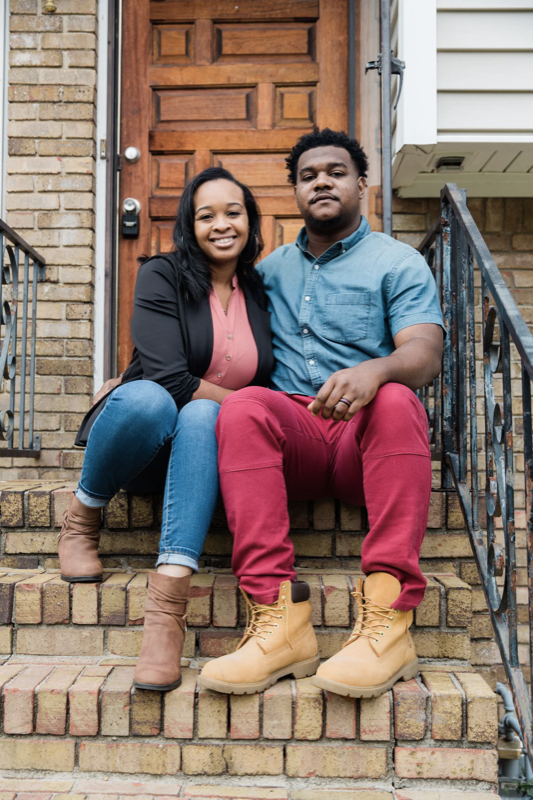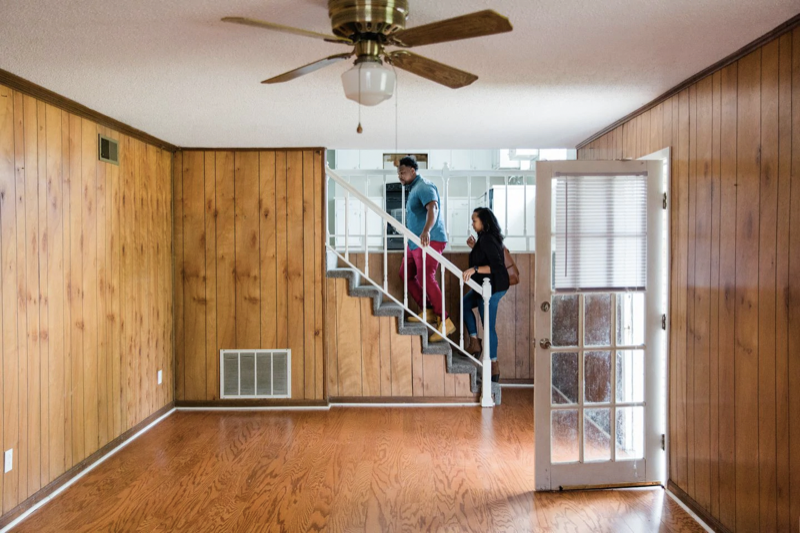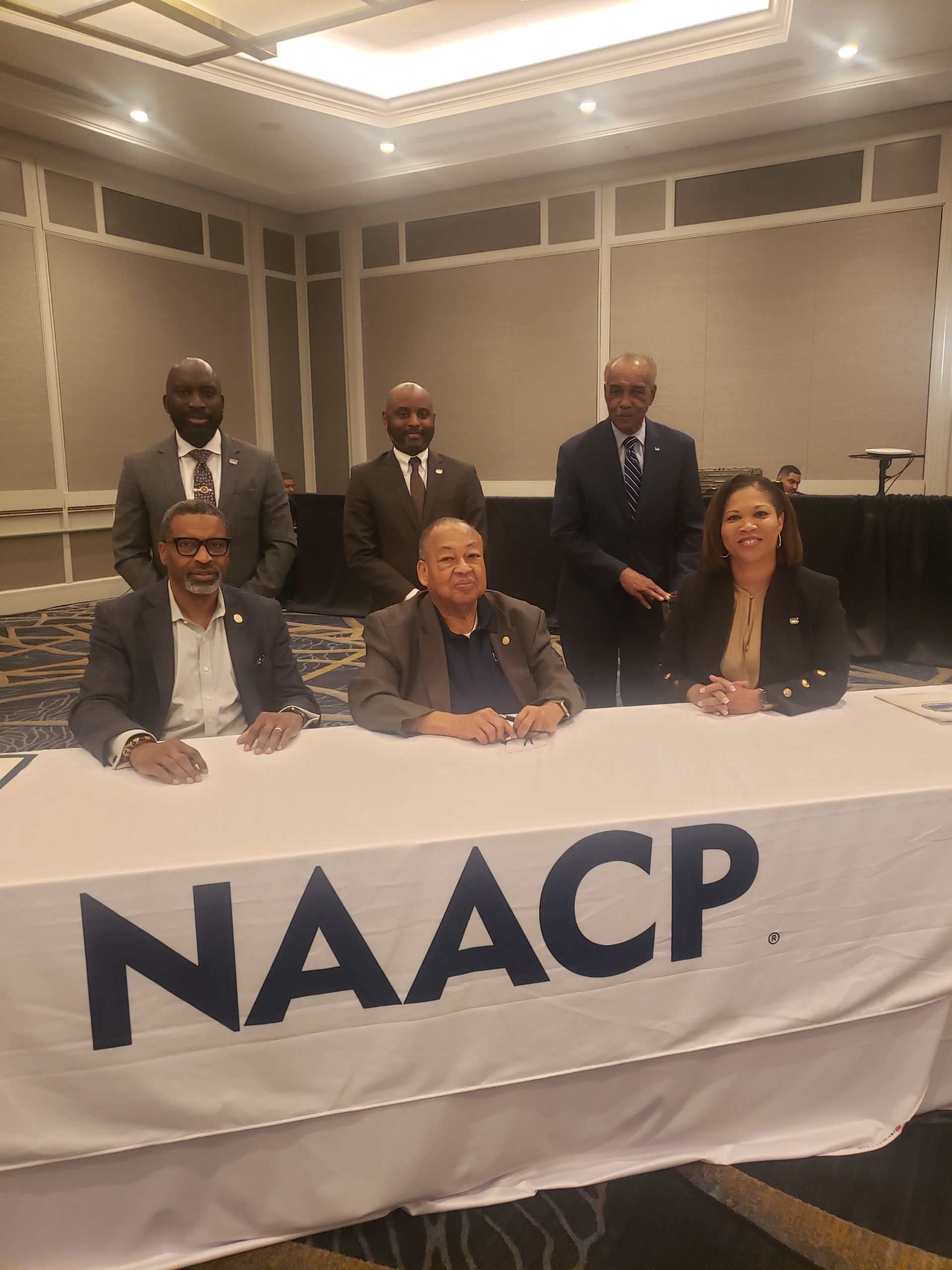For many black millennials, student debt is biggest hurdle in homeownership
By Troy McMullen
Not long after they were married in 2017, Rick and Astardii Hopkins started shopping for a home.

But when the Birmingham, Ala., couple began exploring home loans, they quickly realized their college loan debt limited their options. Both attended local colleges, and like many African American millennials across the country who took on debt in higher proportion than their white counterparts, they were left with tens of thousands of dollars in student loans to repay.
“The loans hit us pretty hard,” said Rick, 28, a chief engineer at Courtyard by Marriott. “It basically limited what we could save for a down payment and how much we could borrow from the bank.”
The couple began working with real estate agent Laurane Simon, who guided them through the financing process and eventually helped them secure a mortgage. A member of the National Association of Real Estate Brokers (NAREB), the oldest black real estate trade association in the country, Simon primarily focuses on African American first-time buyers, better educating them on everything from securing a home loan to budgeting for a down payment.
“This is exactly the kind of first-time home buyer the industry needs,” Simon says. “We need younger buyers of color to be able to embrace real estate.”
![Rick and Astardii Hopkins examine a for-sale property in Birmingham, Ala. “The [student] loans hit us pretty hard,” Rick says. “It basically limited what we could save for a down payment and how much we could borrow from the bank.” (Cameron Carnes/For The Washington Post)](http://www.nareb.com/site-files/uploads/2019/10/2-copy.png)
But for black Americans — whose overall homeownership rates remain near record lows — attracting a younger generation of home buyers is even more critical.
For a minority group that spent generations largely shut out of a fundamental pillar of the American Dream, black millennials offer the best hope for closing the persistent racial homeownership gap in the United States, housing experts and advocacy groups say.
Homeownership levels for blacks reached 42.7 percent in the third quarter of 2019 (compared with 64.8 percent for the overall population), a near-record low that has virtually erased all of the gains made since the passage of the Fair Housing Act in 1968, landmark legislation outlawing housing discrimination, census data show.
“African Americans are already being left out of the housing market and that’s exacerbating levels of inequality in this country,” says Lawrence Yun, chief economist and senior vice president of research at the National Association of Realtors (NAR). “There’s a kind of urgency now within the housing community to bring younger African American buyers into real estate.”

Despite a decade of economic growth in the United States, including record low unemployment and higher wages for black workers, millennials of color make up only a small portion of the overall market for real estate, data show.
Millennials made up 37 percent of all home buyers in 2015, lagging behind homeownership rates of Gen X and the baby boomers — the two previous generations, according to research from the Urban Institute. But millennials of color have homeownership rates nearly 15 percentage points lower than their white counterparts.
Between 2005 and 2015, the homeownership rate among white young adults was 38.5 percent, compared with 28.8 percent for Hispanics and 14.5 percent for African Americans, Urban Institute research found. The black millennial homeownership rate fell nearly 10 percentage points during that time, and was the only group to not experience an increase during the housing boom.
Several factors account for the lower numbers, housing experts say.
They include a lack of affordable housing in some areas and chronically low inventory in others. Some surveys also show millennials’ shifting attitudes on homeownership in the wake of the financial crisis.
But like their white counterparts, rising student debt is increasingly the biggest hurdle for many black millennials as more financially strapped younger buyers struggle to save for a down payment.
Nearly 85 percent of blacks who graduated with bachelor’s degrees in 2016 carry student debt, compared with 69 percent of whites with bachelor’s degrees, according to the Center for Responsible Lending, a consumer-advocacy group. The nonprofit organization estimates that the average black student loan borrower owes about $34,000 compared with about $30,000 for white student borrowers.
Nearly 38 percent of all black students who entered college in 2004 had defaulted on their student loans within 12 years, a rate more than three times higher than their white counterparts, according to the Brookings Institution.
A lack of what’s known as intergenerational wealth — or being able to get financial help from a parent — is also hurting younger buyers of color, says Alanna McCargo, vice president for housing finance policy at the Urban Institute.
She says parental wealth has long increased the likelihood of homeownership among young adults, but because minorities are less likely to be homeowners and have less wealth, they are less likely to be able to help their children with things such as money for a down payment or closing costs — often the biggest obstacles for would-be home buyers.
“This explains part of the reason for the persistent gap in homeownership across racial and ethnic groups,” McCargo says. “And it’s another reason to sound the alarm for boosting the minority homeownership rate as the best way to build long-term wealth for black households.”
Despite the bleak housing numbers for black millennials, Donnell Williams, president of NAREB, says he’s optimistic the trend can be reversed.
He points to Urban Institute research using Freddie Mac data showing that black millennials represent 11.4 percent of the pool of mortgage-ready applicants in 31 of the country’s largest metropolitan areas.
This group represents people below age 40 who don’t have a mortgage, but have strong enough credit to qualify for one; a debt-to-income ratio of 25 percent or less; and no recent foreclosures, bankruptcies or serious delinquencies.

While the percentage of mortgage-ready white and Hispanic millennials outpace that of blacks — 19.9 percent and 18.5 percent, respectively — the figure still represents 1.7 million African Americans with a potential for homeownership.
“Wealth building through homeownership is indeed possible and we need to make that happen,” Williams says. “And homeownership represents the tools black Americans in general, and millennials in particular can use to build or rebuild their wealth.”
NAREB recently launched a campaign aimed at getting younger people of color to embrace homeownership.
The effort is called House Then The Car and focuses on communities that have large numbers of millennials and Gen Xers who do not own homes. Car loans are still preventing African Americans in this demographic from buying homes, data from Freddie Mac show.
The campaign includes enhancing financial education, improving homeowner awareness through online educational campaigns and streamlining the mortgage process. The goal is to reach mortgage-ready black millennials who make more than $100,000 annually, but have delayed or not considered homeownership, adds Antoine Thompson, NAREB’s executive director.
Rodney Hampton started home shopping when he returned to Dallas in 2017 after getting his MBA and working in Kansas City, Mo. The 37-year-old Dallas native works in financial services and says he watched home prices rise sharply over the past few years but still decided to jump in.

Like many millennials, he lives in a market where rising home prices and strong demand are sidelining many first-time buyers.
According to a NAR study that examined top millennial housing markets, younger buyers can afford just 10 percent of the homes listed for sale in Dallas.
“When you look at listings, you worry about being priced out of the market,” says Hampton, who worked with J. RaShad Thomas of Star Five Realtors in Dallas to find a two-bedroom home listed at $298,000 in Arlington, a city just west of Dallas that has seen steady price increases over the past five years. “You have to factor in affordability, but ultimately I knew that waiting on the sidelines too long wasn’t really a smart financial option for me.”
In Chicago, real estate agent Sanina Ellison is encouraging younger buyers to consider multifamily housing rather than a traditional single-family home as their first investment. Ellison, a principal owner at Chicago Homes Realty Group, says owning a multifamily property generates income and builds wealth for younger buyers.
“They also offer slow but steady appreciation which is important for a first investment,” she says.
Frantz Jacques is working with Ellison to find a multifamily property in emerging areas of Chicago such as Bronzeville and South Shore, two South Side neighborhoods experiencing increased development. He’s financing the investment through a Federal Housing Administration loan, government-backed financing that can be used for properties with up to four units. He says he has already looked at several properties and hopes to make an offer on one soon.
“This is about building generational wealth,” says the 25-year-old account executive at e-commerce firm Groupon. A native of Evanston just north of Chicago, he graduated college in 2016 and says homeownership was at the top of his list after settling in Chicago.
“I grew up in a family of homeowners,” he says. “So I always understood the long-term financial benefits of owning your own home.”
Sources: Troy McCullen \ The Washington Post


